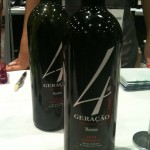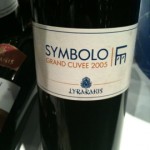When people comment on how fun my job must be, I always say, “the research doesn’t stink.” This is never truer than when I get to combine terrific food with whatever wine I am tasting. Such was the case this week when I had the pleasure of tasting two Mexican wines while being treated to authentic Mexican cuisine at Suzette and Arturo Franco-Camacho’s newest food child, Tacuba Taco Bar. Tacuba is the name of a municipality in northwest Mexico City. With this latest restaurant, Chef Franco-Camacho honors his Mexican heritage and his mother’s taqueria in Tijuana where he grew up.
My friend and I arrived, with four kids in tow, after spending the day melting from the heat wave moving through Connecticut. We were tired but looking forward to a relaxing evening out in an air-conditioned restaurant. Upon opening the door to the unassuming entrance, we were struck with another heat wave; the air conditioning was out. Undaunted, I strolled in and gave the host my name. My companions followed reluctantly. It was not long into the meal before everyone agreed that we had made the right decision by staying, and that the heat added a touch more authenticity.
Although I am a tried and true foodie, I will save the majority of my prose for the wine and limit the food commentary to one simple sentence – everything was delicious and reasonably priced. The décor is pleasant and fun, a colorful montage of Mexican accented with contemporary touches, such as corrugated aluminum. A giant picture frame on the wall offers a canvas for silently run black and white Mexican movies, a great distraction for the hot and somewhat restless children. In the open kitchen, one can watch Chef Franco-Camacho creating culinary magic. If you really like to be part of the action, you can sit at the counter area directly in front of the kitchen. On the other side of a partitioning wall is the very adult bar, “Swill.” I had to run my hand over the wood bar and feel the natural undulations. A chandelier composed of wine glasses provided the very low mood lighting.
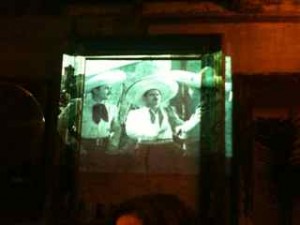
Back in the dining area, we were given menus with only two wines listed: Mexican sauvignon blanc and Mexican cabernet sauvignon. If you are not a wine drinker, there are mixed drinks, beers and 24, that’s right, 24, tequilas to choose from. But if you do like wine, I highly recommend you try one of the Mexican offerings. They go well with the food. I am hoping to return soon, minus the children, to conduct further research at Swill.
L.A. Cetto Sauvignon Blanc 2009
The nose was slightly grassy with tropical fruit notes. Herbaceousness and stone fruits were evident in this mineralic, medium oaked, unassuming wine.
L.A. Cetto Cabernet Sauvignon 2008
The cab also had a mineralic and somewhat flinty taste, with dark red berries, cassis and a bit of earthiness. Medium bodied and smooth, this wine ended with a short finish.
Tacuba Taco Bar, 1205 Main Street, Branford, CT
203-208-0736
wwww.tacubataco.com
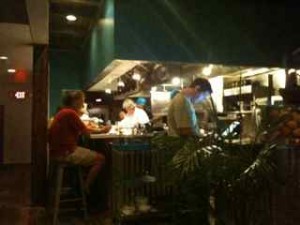
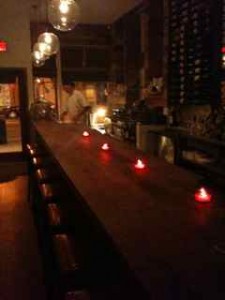
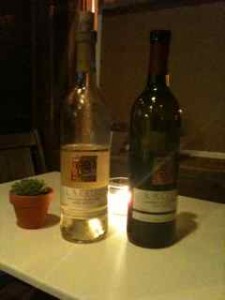
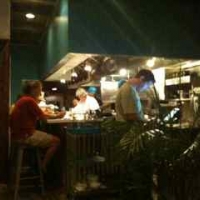
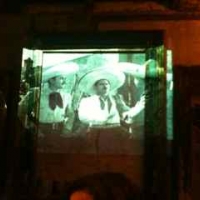
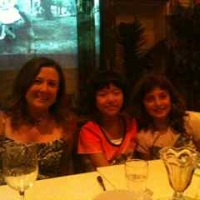

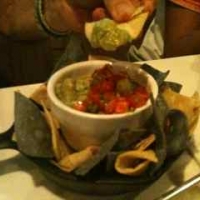
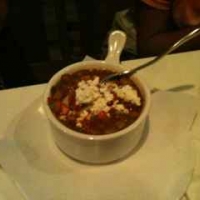
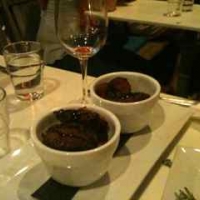

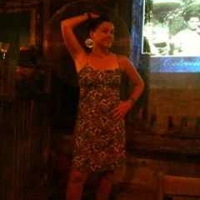
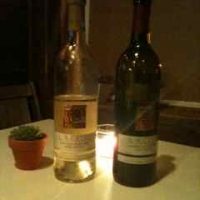
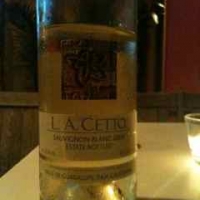

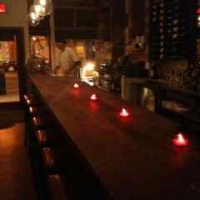

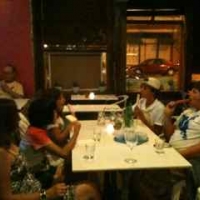
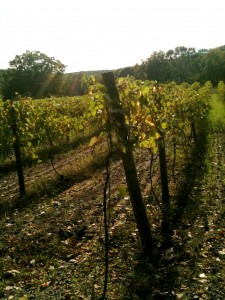 I recently became involved in Connecticut’s Farm to Chef Program, a wonderful group whose mission is to connect local culinary professionals with producers and distributors of Connecticut grown products. My involvement began as a result of my work with a few Connecticut chefs committed to producing menus based on locally grown and produced food, and our mutual interest in promoting local wineries. The following is the story of my local journey. It was published in the May CT Farm-to-Chef Newsletter.
I recently became involved in Connecticut’s Farm to Chef Program, a wonderful group whose mission is to connect local culinary professionals with producers and distributors of Connecticut grown products. My involvement began as a result of my work with a few Connecticut chefs committed to producing menus based on locally grown and produced food, and our mutual interest in promoting local wineries. The following is the story of my local journey. It was published in the May CT Farm-to-Chef Newsletter. I had the pleasure of attending my first wine tasting event at Divine Wine Emporium in Niantic last Wednesday. The Emporium is a liquor store with a “learning center” in the back for wine events. The store is well laid out, warm, friendly and interesting. Little touches catch one’s eye, like the collection of antique wine bottle openers at one end of the store. The owner, Ken Turcotte, is knowledgeable and passionate. After perusing the shelves, I headed for the back room. The event was packed, every seat was filled and bodies lined the walls. Things were getting warm and the wine had yet to be poured. The main event? Marcus Notaro, head winemaker at Col Solare vineyard in Washington State. Mr. Notaro looks too young to be a head winemaker but, after listening to him speak, I’m convinced he’s up to the task.
I had the pleasure of attending my first wine tasting event at Divine Wine Emporium in Niantic last Wednesday. The Emporium is a liquor store with a “learning center” in the back for wine events. The store is well laid out, warm, friendly and interesting. Little touches catch one’s eye, like the collection of antique wine bottle openers at one end of the store. The owner, Ken Turcotte, is knowledgeable and passionate. After perusing the shelves, I headed for the back room. The event was packed, every seat was filled and bodies lined the walls. Things were getting warm and the wine had yet to be poured. The main event? Marcus Notaro, head winemaker at Col Solare vineyard in Washington State. Mr. Notaro looks too young to be a head winemaker but, after listening to him speak, I’m convinced he’s up to the task.
 The results are in and, although I would like to say I am shocked, I am not. Winetwits has just announced that, by a 2 to 1 margin, the 2009 Barone Fini Pinot Grigio was favored over the 2009 Santa Margherita Pinot Grigio in the Pinot Grigio Taste Challenge held on March 24. To read WINE’s tasting notes on the challenge, please see our
The results are in and, although I would like to say I am shocked, I am not. Winetwits has just announced that, by a 2 to 1 margin, the 2009 Barone Fini Pinot Grigio was favored over the 2009 Santa Margherita Pinot Grigio in the Pinot Grigio Taste Challenge held on March 24. To read WINE’s tasting notes on the challenge, please see our  In the ultimate social media networking experience, a friend and I joined winetwits and over 50 twitter members in a virtual wine tasting last night. Giovanni Bonmartini-Fini, the producer of Barone Fini Pinot Grigio, was present at the Robert Smith Hotel in New York to conduct a blind wine tasting – Barone Fini versus an unknown Pinot Grigio. As the host guided the participants through the tasting, more than 50 wine experts and enthusiasts conducted their own tastings at home simultaneously with a live stream of the tasting at the hotel and tweeted their comments using the hashtag #tastechallenge. Giovanni began with a brief history of the now 150 year old Italy. He then spoke of terroir. He next led everyone through a blind tasting of the two wines. Armed with tasting mats and tasting note cards, virtual participants tweeted their thoughts throughout the presentation and the tastings – everything from chat about wine coasters to in depth critiques of the wines. After both wines had been tasted, participants were asked to vote for their favorite. Several minutes later, the brown paper bag clad bottles were unveiled and their contents revealed. But before I tell you what was inside, here is WINE’s tasting notes on the two wines:
In the ultimate social media networking experience, a friend and I joined winetwits and over 50 twitter members in a virtual wine tasting last night. Giovanni Bonmartini-Fini, the producer of Barone Fini Pinot Grigio, was present at the Robert Smith Hotel in New York to conduct a blind wine tasting – Barone Fini versus an unknown Pinot Grigio. As the host guided the participants through the tasting, more than 50 wine experts and enthusiasts conducted their own tastings at home simultaneously with a live stream of the tasting at the hotel and tweeted their comments using the hashtag #tastechallenge. Giovanni began with a brief history of the now 150 year old Italy. He then spoke of terroir. He next led everyone through a blind tasting of the two wines. Armed with tasting mats and tasting note cards, virtual participants tweeted their thoughts throughout the presentation and the tastings – everything from chat about wine coasters to in depth critiques of the wines. After both wines had been tasted, participants were asked to vote for their favorite. Several minutes later, the brown paper bag clad bottles were unveiled and their contents revealed. But before I tell you what was inside, here is WINE’s tasting notes on the two wines: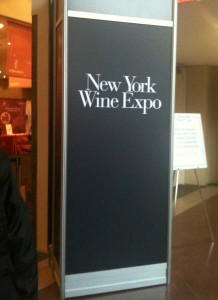 If ever I wished for a day that had more hours in it than 24, yesterday would have been that day. I attended the International Restaurant and Foodservice Show of New York at the Javits Convention Center. I was excited to peruse the aisles of the Japan Pavilion section while sipping sake, and cruise the endless rows of cheese and baked goods. But the real reason I dragged myself out of bed at 6:15 on Sunday morning was just down the hall from the show – the New York Wine Expo. Upon learning that the Expo was showcasing over 640 wines from over 160 winemakers from all over the world, I steeled myself for some serious sipping. With so many wines and so few hours, though, where does one begin?
If ever I wished for a day that had more hours in it than 24, yesterday would have been that day. I attended the International Restaurant and Foodservice Show of New York at the Javits Convention Center. I was excited to peruse the aisles of the Japan Pavilion section while sipping sake, and cruise the endless rows of cheese and baked goods. But the real reason I dragged myself out of bed at 6:15 on Sunday morning was just down the hall from the show – the New York Wine Expo. Upon learning that the Expo was showcasing over 640 wines from over 160 winemakers from all over the world, I steeled myself for some serious sipping. With so many wines and so few hours, though, where does one begin?